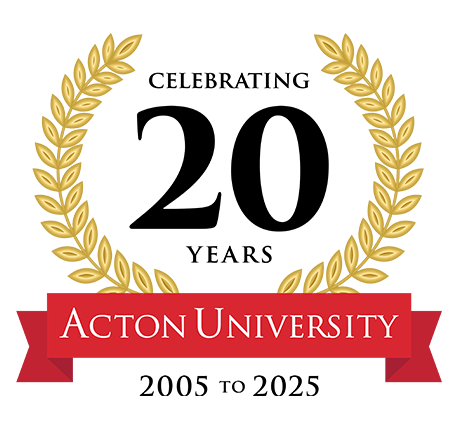I demand nothing better, you may be sure, than that you should really have discovered outside of us a benevolent and inexhaustible being, calling itself the state, which has bread for all mouths, work for all hands, capital for all enterprises, credit for all projects, ointment for all wounds, balm for all suffering, advice for all perplexities, solutions for all problems, truth for all minds, distractions for all varieties of boredom, milk for children and wine for old age, which provides for all our needs, foresees all our desires, satisfies all our curiosity, corrects all our errors, amends all our faults, and exempts us all henceforth from the need for foresight, prudence, judgment, sagacity, experience, order, economy, temperance, and industry. [1]
Background of HOPE VI
In the paragraph above, Bastiat satirically attacked the socialist writers of his day for offering up statist solutions for human problems. Likewise, our continuing duty is to expose the fallacies of such statist solutions wherever they may be found. One such example is in the activity of the U.S. Department of Housing and Urban Development (HUD). This government agency has done much over the years to undermine the economic development of cities. In HOPE VI, HUD has reached a new level of vain conceit in its assertion that it knows best how to promote inner city development.
HUD was begun in 1965. Since then, it has steadily deteriorated into a mechanism that allows rent seeking and pork barrel spending to increase at a rampant pace. Though HUD has promoted one doomed project after another, some politicians continue to claim that its activities are necessary to accommodate the housing needs of low-income families or individuals. Such a claim is in reality an ugly ruse, because HUD’s policies and projects actually undercut the kind of development that would indeed help low-income families and individuals meet their housing needs. HOPE VI is HUD’s latest initiative. The project is also called Housing Opportunities for People Everywhere, the Urban Revitalization Demonstration, or the Urban Revitalization Program. Whatever it is called, HOPE VI will have deleterious effects on those residents of the cities receiving funds under its guidelines.
There have been other HOPE initiatives. Earlier programs resulted in the development of numerous housing projects that are now considered failures. For instance, the crime-ridden public housing projects that exist in many large cities had their inception in HUD activity. Yet, the failures of these former HOPE programs have provided the impetus to establish additional HOPE initiatives. HOPE VI became law in 1992 as an effort to remedy the failures of previous HOPE programs and was prompted by the recommendation of the National Committee of Severely Distressed Public Housing (NCSDPH). The NCSDPH suggested by report that the physical deterioration of, lack of community services for, and poor management of government housing warranted some kind of action. Thus, HOPE VI is the progeny of a new vision to “eradicate severely distressed public housing by the year 2000.” [2] Since 1992, HUD has rationed out an average of $500 to $600 million every year to public housing authorities around the country.
Has HUD’s financial assistance actually improved the lives of the people who had been living in the government’s housing projects? Like most government programs, HUD aims to achieve its goals by doing little more than throwing money at the problem. While some of these funds have gone to grants to renovate existing complexes, a large amount of this money has been spent to demolish older public housing. Plenty of cities are always willing to accept these funds from HUD. From 1996 to 2001, HUD awarded 177 demolition grants to cities in 31 states worth $293.3 million. In Chicago alone, HUD awarded approximately $69 million in order to destroy 10,654 housing units. [3] HOPE VI also provides funding for the construction of new projects to replace the demolished housing. In 2001, HUD spent $492 million on revitalization grants that ultimately pay for the construction of new public housing communities.
In total, the agency has spent $4.55 billion dollars on its various projects since the HOPE VI initiative was adopted. [4] In effect, the purpose of the program is to destroy older housing in order to build new townhouse communities. According to HUD, the design of the new public housing projects is the key to preventing the failures of the previous initiatives.
However, tearing down existing public housing projects and replacing them with new townhouses will do little to cure the ills that warranted their demolition.
False Hope
Two main flaws inhere in the reasoning of HUD officials and others who support HOPE VI. First, HOPE VI immediately displaces the residents of existing housing units wherever such projects are undertaken. The initial phase of the initiative is to destroy a significant number of existing housing projects. The evicted residents receive no meaningful compensation for this displacement and are relocated to other public housing units or left to their own devices to scrounge for any available private housing. Either way, HOPE VI imposes substantial costs on those families and individuals who are presumably supposed to be helped by HUD’s programs.
The larger problem with HOPE VI issues from a false premise. Andrew Cuomo announced in one of HUD’s press releases that HOPE VI’s aim is to change “the physical shape of public housing by demolishing severely distressed projects – high rises and barracks-style apartments – and replacing them with garden-style apartments or townhouses that become part of their surrounding communities.” [5] Therefore, according to Cuomo, earlier public housing projects became “severely distressed” as a result of their architecture being “high rises” or “barrack-style apartments.” Crime, drug abuse, and the lack of economic means confronting public housing residents will not be remedied by the construction of prettier housing projects. Cuomo and other proponents of HOPE VI seem to believe that the social problems attendant to public housing communities can be overcome by building houses that look like those that exist in nicer communities. Such is the naiveté of those who promote statist programs like HOPE VI.
In effect, HOPE VI proponents seem to indicate that the crime, drug abuse, and growing shortage of economic means in public housing would not have occurred if the government had simply adopted the correct architecture for the earlier projects and that correcting this mistake should alleviate those social ills. However, Larry Keating, professor at the Georgia Institute of Technology, has aptly pointed out that “social pathologies do not inure in buildings. Destruction of the physical container does nothing to cure the social ills that may afflict the residents within....” [6] It does not follow that simply altering the shape of public housing will stimulate the alteration of the behaviors and lifestyles of people living inside them. The fundamental social problems in government public housing communities have resulted from human action, changing the floor plan and aesthetics of that housing will do little, if anything, to address those social problems.
To bolster their argument, proponents of HOPE VI also focus on the mixed-income nature of the replacement public housing projects, contending that the social ills that pervade existing projects will be cured by mixing people together from a wide variety of economic classes. Cuomo sums up this argument with eloquent, but empty, rhetoric, stating “We are transforming public housing projects with problems into new mixed-income communities with promise. We are making public housing a launching pad to opportunity, jobs, and self-sufficiency – instead of a warehouse trapping people in poverty and long-term dependence.” [7] The implication of Cuomo’s statement is clear: Living next door to someone of better economic means will provide all that is necessary for someone else to realize his or her own economic advancement.
Said another way, HOPE VI proponents assume that the establishment of mixed-income communities will provide the motivation and training for residents of public housing to eventually move up the socioeconomic ladder and out of public housing. However, simply integrating people who have few economic opportunities together with those of greater economic means does next to nothing to enhance the options for low-income families and individuals. Most people naturally recognize that the surest means to improve socioeconomic standing is the adoption of a lifestyle that stresses the virtues of hard work, prudence, temperance, and saving. The grants of HOPE VI actually undercut a person’s incentive to adopt such a lifestyle, because it will provide current residents (who weather the displacement) with improved housing regardless of their personal efforts. Such a program neither discourages vice nor rewards virtue. The current social ills that plague government housing will not be meaningfully addressed by having nicer, more affluent neighbors next door or down the street.
Not only does HOPE VI fail to adequately address the social problems of current government housing residents, it also dismisses the hard work of those who have struggled to survive without government assistance. As James Bovard put the matter, “HOPE is a slap in the face to the working poor and lower middle class who stayed out of public housing. The notion that HUD can give away housing to some people without having any adverse effects on their fellow citizens and neighbors is the ultimate left-liberal pipe dream...In effect, the goal of fixing up the projects works at cross purposes with the goal of encouraging residents to find private housing alternatives.” [8]
Simply put, HOPE VI aspires to improve the living conditions for only a small number of low-income families and individuals while ignoring the rest. It sends the message “that need, rather than achievement, is the way to move up the socioeconomic ladder in America.” [9]
In addition to belittling the importance of achievement, HOPE VI’s distribution of resources on the basis of need before merit also neglects biblical admonitions against misguided endowment of funds. In I Timothy 5:9 (NRSV), Paul warns Timothy that only a widow who meets certain qualifications, including “devot[ing] herself to doing good in every way,” should be included on the list of those whom the church should support financially. Paul indicates here that the church, to which people provide funds freely, should be conscientious about dispersing those funds lightly. The grants in HOPE VI, all of which are generated from taxes that citizens must pay to avoid imprisonment, fund public local housing authorities regardless of the current status of the housing projects these authorities manage. Paul clearly believed that the system in the church would be offended by a handout program based on need alone. HOPE VI implements just such a handout program in American society. Paul’s admonition, which should analogously be applied to HOPE VI or any other similar statist program, has been either willfully or carelessly disregarded.
Out in the Cold
Beyond the ostensible message of HOPE VI lurks the harsh reality that the program will displace a large number of current public housing residents. For almost every resident in a new HOPE VI low-income housing unit, a past public housing resident has been evicted. This reality has occurred because the grants received by housing authorities have not been spent to replace public housing at a one-to-one rate. Even when a new replacement unit was substituted for one that has been destroyed, some former residents have been precluded from living in the replacement units, because a large number of these units are intended for wealthier tenants. In a 2001 article on the subject, Wilgoren observed that over the life of the HOPE VI program 97,000 public housing units had been demolished, while only 61,000 units had been built at a total cost of over $4 billion. [10] Therefore, the program has clearly failed to benefit the large number of low-income families and individuals who have been permanently ousted. The immediate option left for these families and individuals seems to be to pack up and move into another slum. It is hard to see how the HOPE VI program benefited these permanently displaced residents at all.
A result of HOPE VI then is to increase the strife among residents of public housing projects. In addition, this program leads to the more rapid deterioration of other public housing communities, forcing their populations to swell. Local housing authorities appear to have turned their backs on finding a solution for problems that exist in these neighborhoods, because the grants awarded by HUD under HOPE VI often go to demolish the most dilapidated complexes. In essence, HUD’s new program rewards the unsuccessful management of existing public housing complexes with funds to build new public housing projects.
In the nineteenth century, waves of immigrants came to America in the hope of building better lives for themselves. Many began their lives in this country living in inner-city slum communities. Most of these people eventually moved out of these slums because the fruits of their labor allowed them to afford better housing. The primary effect of programs like HOPE VI is to ignore Paul’s admonition by teaching residents of public housing not to implement this American heritage, but to endorse a statist dream that will never come true. Nevertheless, hopelessness springs eternal in public housing.
ENDNOTES:
1. Frederic Bastiat, Selected Essays on Political Economy (Irvington, NY: Foundation for Economic Education, 1995), 142.
2. HOPE VI (Washington, D.C.: Housing and Urban Development, November 2001).
3. HOPE VI: Demolition Grants: 1996-2001 (Washington, D.C.: Housing and Urban Development, November 2001).
4. HOPE VI: Revitalization National Fact Sheet (Washington, D.C.: Housing and Urban Development, November 2001).
5. “Cuomo Announces $35 Million HOPE VI Grant to Nashville to Transform Public Housing and Help Residents” (Washington, D.C.: Housing and Urban Development, No. 99-169, August 30, 1999).
6. Larry Keating, “Redeveloping Public Housing: Relearning Urban Renewal’s Immutable Lessons,” Journal of the American Planning Association, 66 no. 4, (2000): 384.
7. “Cuomo Announces $35 Million HOPE VI Grant to Nashville to Transform Public Housing and Help Residents” (Washington, D.C.: Housing and Urban Development, No. 99-169, August 30, 1999).
8. James Bovard, “HUD’s Biggest Farce?” The Free Market, 18 no. 11 (2000).
9. Howard Husock, “Do We Still Need HUD?” Cato Daily Commentary (January 29, 1998).
10. Debbi Wilgoren, “SE Riverfront Vision Aims for HUD Funds,” The Washington Post, July 9, 2001, sec. B1.












